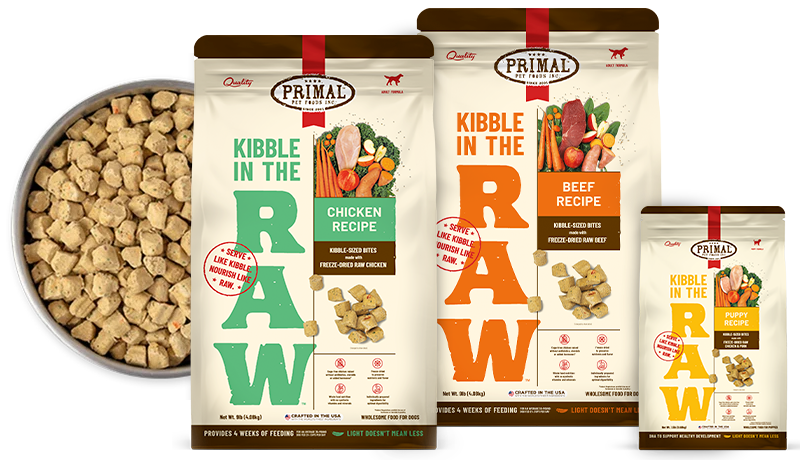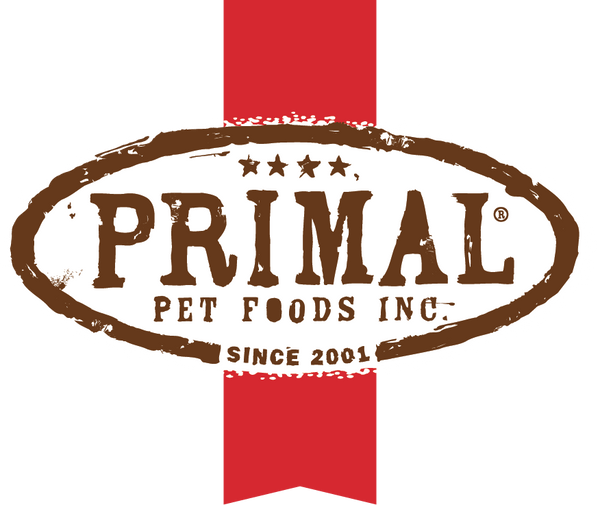
Understanding Pet Food Labels
Pet food labels are confusing. Why aren’t the nutrition facts similar to what is on human foods?
Dogs come in all different sizes. Human food labels are based on a standard 2,000-calorie diet, but a Chihuahua doesn’t need the same calories as a Great Dane.

Guaranteed Analysis
Pet food labels in the United States are required to have what is called a Guaranteed Analysis. This analysis must include the guaranteed amounts of protein, fat, fiber, and moisture (water) in the product. Each value tells you whether it is the guaranteed minimum or guaranteed maximum for that nutrient, meaning we are guaranteeing that the protein, fat, etc., will never be above the maximum or below the minimum listed.
How do we get these values for fresh products like Primal Formulas?
Nutritional values are based on calculations from many samples of the finished product, giving us both the average and the standard deviation—the variance for the entire group as a whole. Approximately 2 times the standard deviation is added or subtracted from the average to give an absolute maximum or minimum value.
We are required to print these guarantees on the bags.
Typical Analysis
For a more accurate representation of what is in your pet food, you can ask for a typical analysis instead. Typical analyses can be given to you on an as fed, dry matter, or caloric basis. Let’s talk about each of those options and what they mean:
As Fed Analysis
An as fed analysis is the percentage or amount of nutrient by weight in its whole form, as you would feed it (including the natural moisture in the product). Taken directly from the packaging, this is the value you would use if you were trying to determine how many grams of protein or other nutrient per day you were giving your pet.
The amount of vitamins, minerals, and micronutrients in an "as fed" analysis can be shown as percentages, milligrams per kilogram of product (mg/kg), or international units per gram (IU/g).
Dry Matter Analysis
The dry matter analysis is the percentage or amount of nutrient by weight of the total product if you removed all of the moisture. This is the value you would want to use if you were comparing two different foods to one another. If you are comparing a food that has a lot of moisture to a food that does not — for example, comparing a dry kibble to a wet canned food — the percentage of protein or other nutrient by weight can be drastically different even though the total grams of protein you would give your pet daily might be the same.
Caloric Analysis
The caloric analysis is the amount of nutrient per 1,000 kcals of food. Some companies will report this in a per-100-kcal basis, so be careful to always look at your units. This is the analysis you would want to use if you were trying to limit a specific nutrient like phosphorus or calcium for your pet on a daily basis. This value is very helpful for veterinarians who are trying to compare foods for how much of a specific nutrient a dog would get if they were meeting their daily caloric requirements. These caloric analysis calculations are most widely used for human food nutrient labeling, often including the disclaimer that values are “based on 2,000 calories per day.”
For more information about Primal’s nutrition, you can contact us or click here to learn more about a specific product. Now that you’re armed with the knowledge of how to understand what goes into your pet’s food, we hope you’ll be able to make educated decisions about how best to feed your pet a complete, balanced diet!

